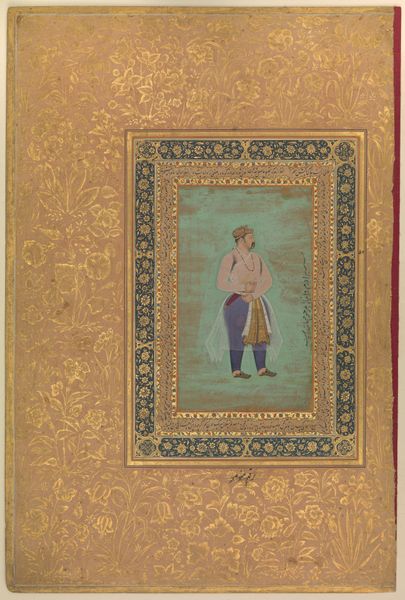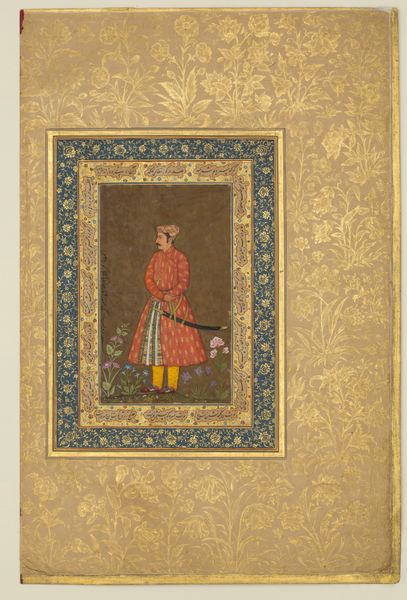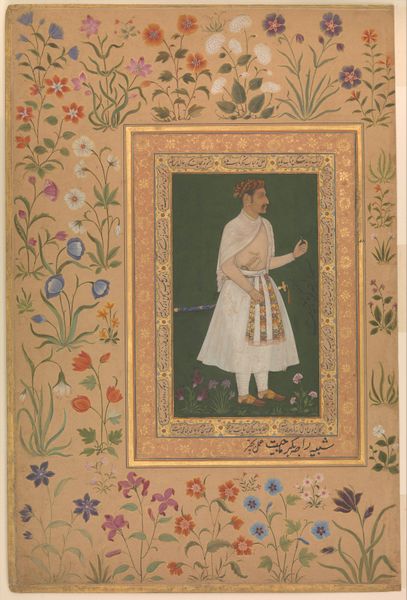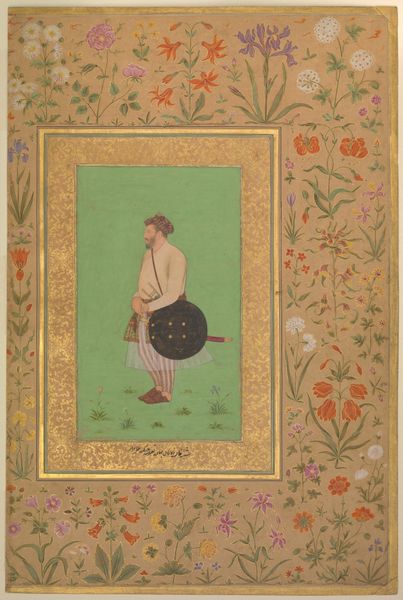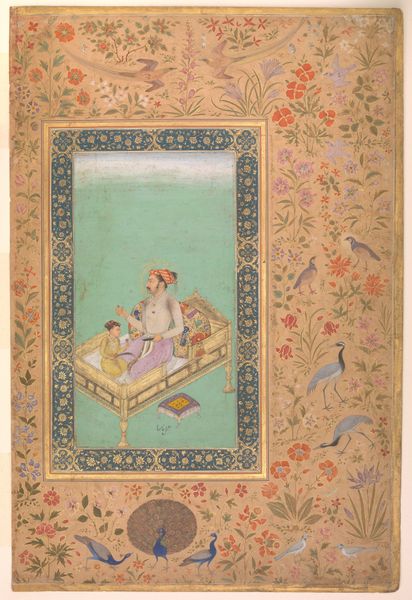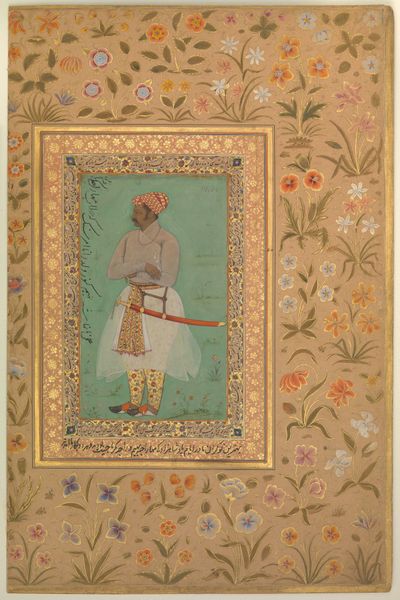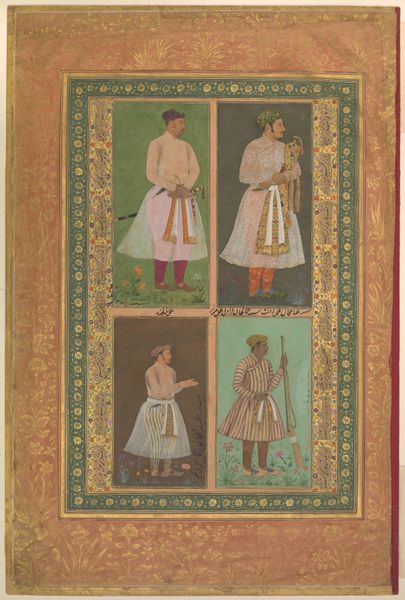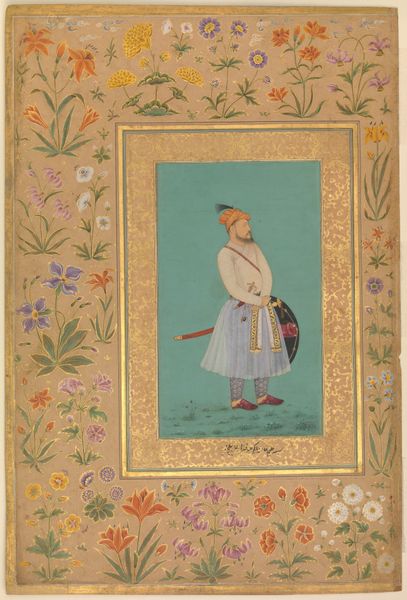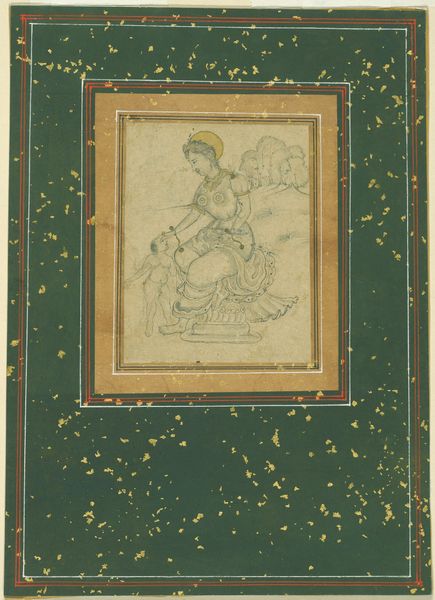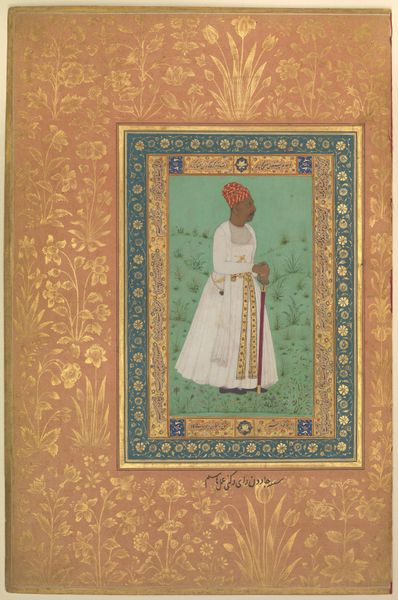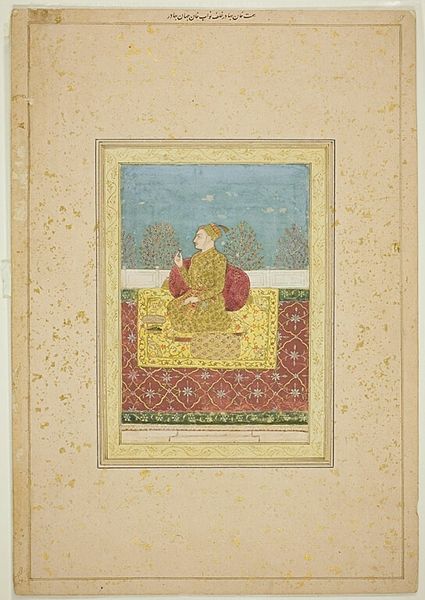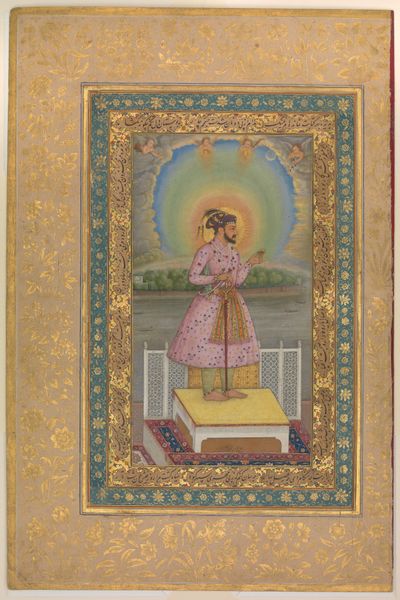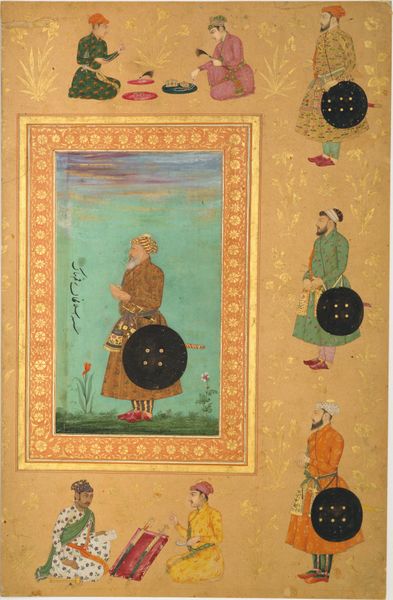
"Portrait of Zamana Beg, Mahabat Khan", Folio from the Shah Jahan Album 1505 - 1635
0:00
0:00
painting, watercolor
#
portrait
#
water colours
#
painting
#
watercolor
#
islamic-art
#
miniature
#
profile
Dimensions: H. 15 1/4 in. (38.7 cm) W. 10 5/16 in. (26.2 cm)
Copyright: Public Domain
Curator: Take a moment to observe "Portrait of Zamana Beg, Mahabat Khan", a folio created between 1505 and 1635 for the Shah Jahan Album, and held here at the Metropolitan Museum of Art. It's believed to be the work of the artist Manohar and it’s rendered in delicate watercolors. Editor: It strikes me as both intensely regal and strangely vulnerable. The colours, while vibrant, are also muted somehow, lending a kind of wistful air. The figure is contained in a small frame, nestled into a peach color page ornamented with delicate gold flowers, giving the effect of a jeweled locket. Curator: Yes, the bordering is exquisite, isn’t it? A deep teal and lapis frame filled with spiraling calligraphy that highlights his importance and stature. Mahabat Khan was a significant Mughal general; the portrait aims to convey not only his likeness but also his authority. Editor: It's interesting you say that. To me, the tight framing almost diminishes that authority. His stance seems hesitant, as though caught mid-gesture. Is this a man comfortable in his power, or someone more introspective? Curator: Perhaps both? Consider the context. Mughal portraiture was about projecting an image, yes, but also about capturing the inner character, the 'izz'. There’s a sensitivity in the rendering of his face that suggests depth beyond mere military prowess. Also note how soft the light seems to emanate, reflecting that he has a luminous, interior spirit, or so the portrait tries to capture, anyway! Editor: And there are possible tensions in his identity too. As a figure in the Mughal court, his presence is representative of a complex historical interplay between Persian, Central Asian, and Indian cultures and power dynamics. To what extent can we read his apparent reticence, as a careful navigation of these complex imperial hierarchies? Curator: These miniatures always seem to hold a multitude of stories. Perhaps its appeal is how the art of courtly portraits also makes him, well, a little more human. It allows a crack of light to be seen, so to speak. Editor: Absolutely. A reminder that even the most powerful figures exist within webs of social and historical forces. What a thought to take with us.
Comments
No comments
Be the first to comment and join the conversation on the ultimate creative platform.
